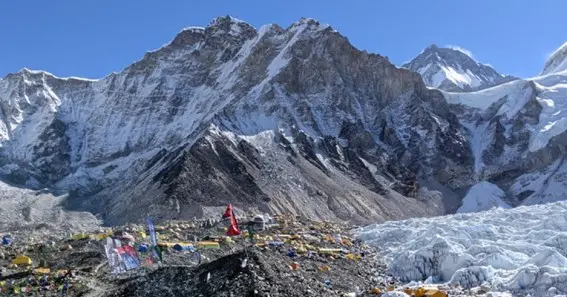Mount Everest, known as “Sagarmatha” in Nepal and “Chomolungma” in Tibet, stands as the world’s highest peak at 8,848 meters (29,029 feet) above sea level. Beyond its towering height, Everest offers a unique blend of natural splendor, cultural richness, and personal challenge, making it a destination worth exploring.
Experience the Majestic Beauty of the Himalayas
The Everest region boasts some of the most stunning landscapes on Earth. Trekkers are treated to panoramic views of snow-capped peaks, deep valleys, and glacial rivers. The journey to Everest Base Camp provides an immersive experience into this pristine environment, offering sights that are both awe-inspiring and humbling.
Immerse Yourself in Sherpa Culture
The Everest region is home to the Sherpa community, renowned for their mountaineering skills and rich cultural heritage. Visiting traditional villages like Namche Bazaar allows travelers to engage with local customs, visit ancient monasteries, and gain insight into the Sherpa way of life. This cultural immersion adds depth to the trekking experience, fostering a greater appreciation for the region’s inhabitants.
Challenge Yourself with an Adventurous Trek
Embarking on the trek to Everest Base Camp is a physically demanding endeavor that tests one’s endurance and determination. The journey involves traversing varied terrains, ascending to high altitudes, and enduring unpredictable weather conditions. Successfully reaching the base camp is a rewarding accomplishment, offering a profound sense of personal achievement.
Witness Unique Flora and Fauna in Sagarmatha National Park
Sagarmatha National Park, a UNESCO World Heritage Site, encompasses the Everest region and is rich in biodiversity. The park is home to rare species such as the snow leopard, red panda, and Himalayan monal. Exploring this protected area provides an opportunity to observe unique wildlife and appreciate the delicate balance of this high-altitude ecosystem.
Support Sustainable and Ethical Tourism
Visiting Everest can contribute positively to the local economy when done responsibly. Engaging with reputable trekking companies that prioritize environmental sustainability and fair labor practices ensures that your journey benefits the community and preserves the natural environment. Participating in eco-friendly treks and supporting local businesses fosters a more ethical and enriching travel experience.
Conclusion
A visit to Mount Everest offers more than just the allure of standing at the world’s highest peak. It presents an opportunity to witness unparalleled natural beauty, engage deeply with a vibrant culture, challenge personal limits, and contribute to sustainable tourism efforts. Whether you’re an avid adventurer or a cultural enthusiast, Everest promises an unforgettable journey that resonates on multiple levels.
Frequently Asked Questions
1. Do I need prior trekking experience to visit Everest Base Camp?
While prior trekking experience is beneficial, many fit and determined individuals without extensive backgrounds have successfully completed the Everest Base Camp trek. It’s essential to prepare adequately, both physically and mentally, and consider hiring experienced guides for support.
2. What is the best time of year to visit Mount Everest?
The optimal periods for trekking in the Everest region are pre-monsoon (March to May) and post-monsoon (September to November). These seasons typically offer clearer skies and more stable weather conditions.
3. How does visiting Everest support local communities?
Tourism is a significant source of income for the local communities in the Everest region. By employing local guides, staying in locally-owned accommodations, and purchasing goods from local vendors, visitors directly contribute to the economic well-being of the area.
4. Are there environmental concerns associated with trekking to Everest?
Yes, increased tourism can lead to environmental degradation if not managed responsibly. Travelers are encouraged to follow Leave No Trace principles, support eco-friendly trekking agencies, and participate in initiatives aimed at preserving the natural environment.
5. Is it possible to experience Everest without undertaking a strenuous trek?
For those unable to commit to the physical demands of a trek, alternative options such as helicopter tours are available, offering aerial views of Everest and the surrounding peaks. Additionally, shorter treks to villages like Tengboche provide glimpses of Everest without the extended commitment.










